Ayurvedic Skin and Hair Care
@

Introduction to Skin
The skin is the largest organ in the human body, covering an area of about 2 square meters on average. It serves as a protective barrier against environmental factors, regulates body temperature, facilitates sensation, and plays a crucial role in the immune system.
The skin consists of multiple layers: the epidermis (outermost), dermis (middle), and hypodermis (innermost), each with distinct functions. The health of the skin is not only influenced by external factors such as weather, pollutants, and hygiene but also by internal factors like genetics, hormones, and overall body health.
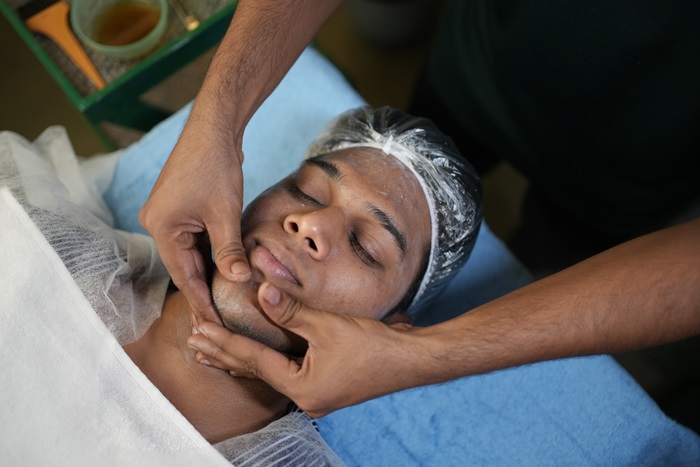
Skin Diseases and Conditions
Skin diseases are varied, affecting people in many different ways. Some of the most common skin conditions include:
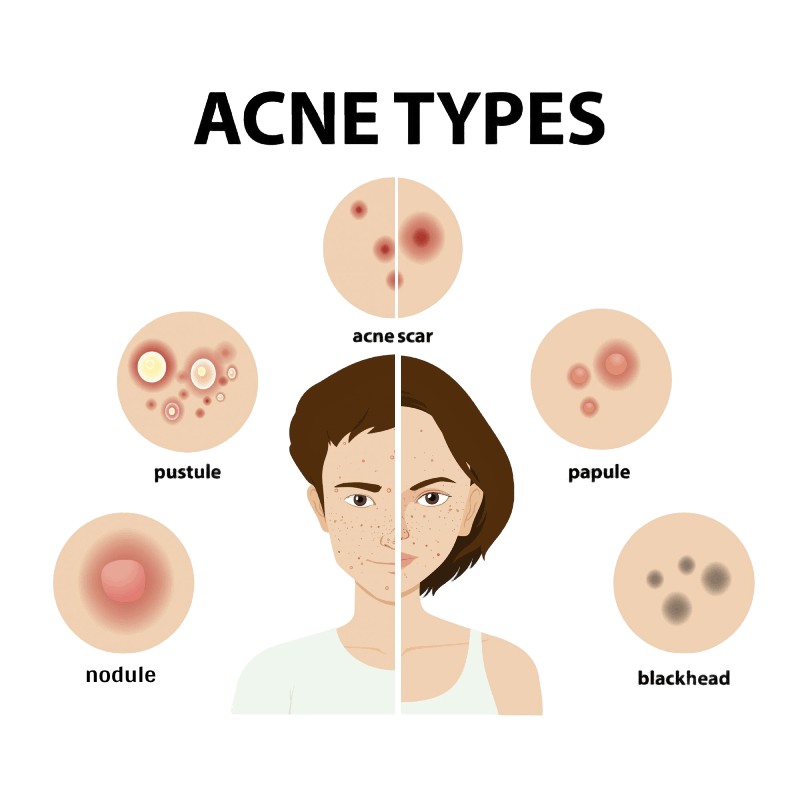
1. Acne (Acne Vulgaris)
- Cause: Excess oil production, clogged pores, bacterial infections, hormonal changes, and stress.
- Symptoms: Pimples, blackheads, cysts, and pustules, typically on the face, back, and shoulders.
- Management: Acne is commonly managed with topical treatments like benzoyl peroxide, salicylic acid, or retinoids. Oral antibiotics, hormonal therapies, or isotretinoin may be used for severe cases.
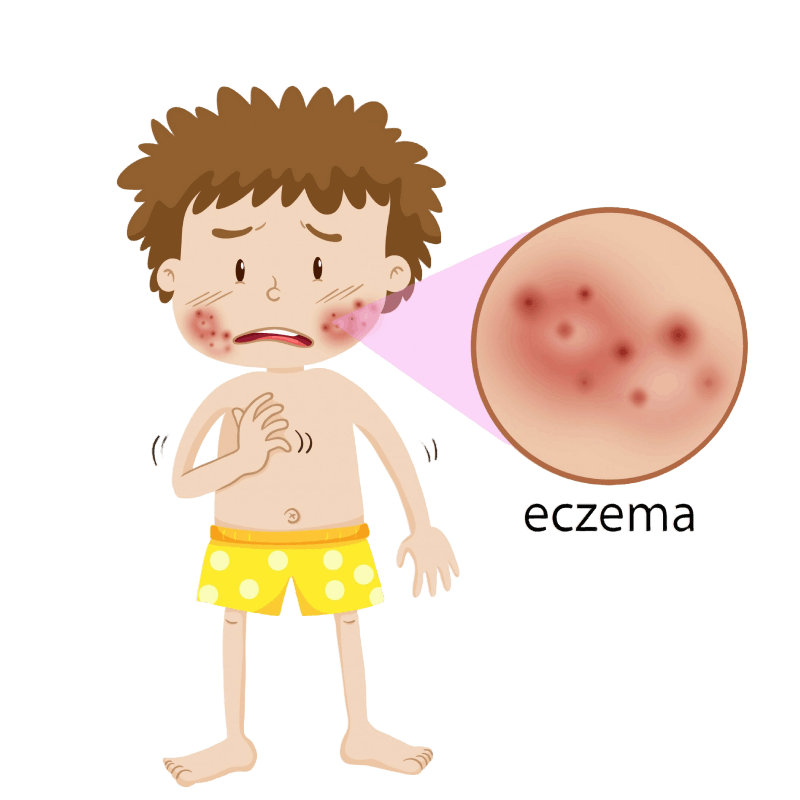
2. Eczema (Atopic Dermatitis)
- Cause: Genetic predisposition, immune system dysfunction, environmental triggers, and stress.
- Symptoms: Red, itchy, inflamed patches on the skin, often on the face, hands, and behind the knees.
- Management: Moisturizers, corticosteroids, antihistamines, and avoiding triggers. For severe cases, immunosuppressants may be prescribed.
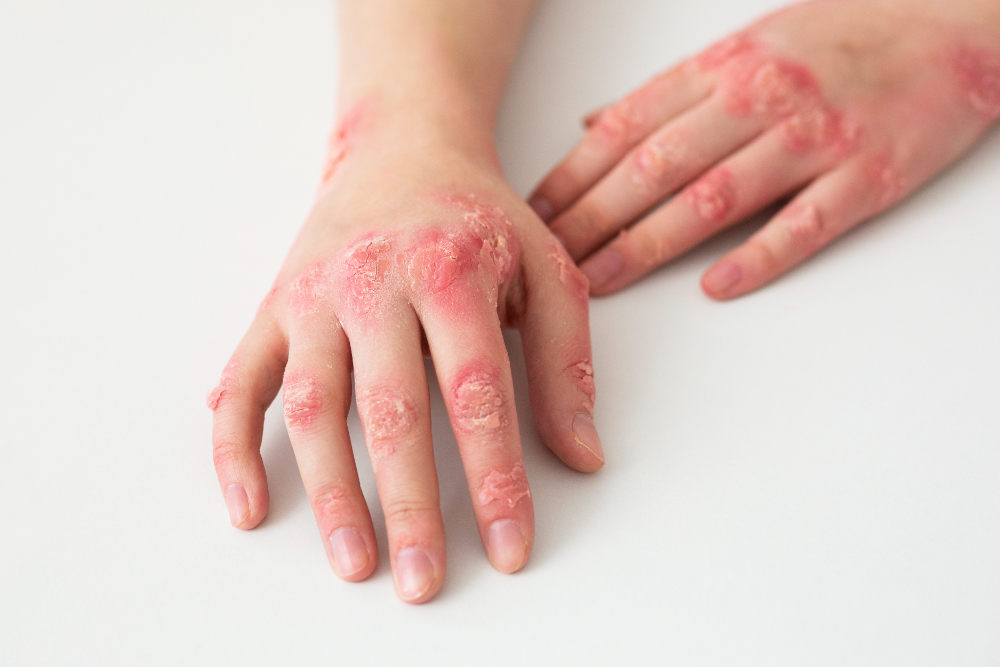
3. Psoriasis
- Cause: Autoimmune disorder, genetic factors, stress, infections, and environmental triggers.
- Symptoms: Red, scaly patches on the skin, often on the scalp, elbows, and knees.
- Management: Topical treatments (steroids, vitamin D analogs), phototherapy, systemic drugs, and biologics to suppress immune activity.
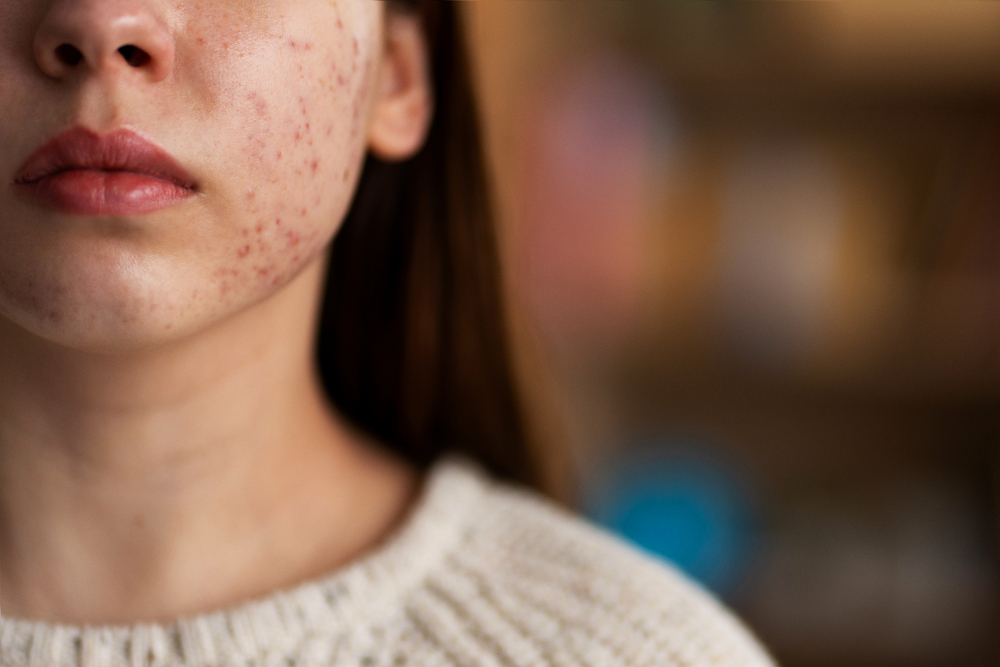
4. Rosacea
- Cause: Chronic inflammation, genetic factors, and environmental triggers such as sun exposure or spicy foods.
- Symptoms: Redness, visible blood vessels, pustules, and swelling, mainly on the face.
- Management: Topical treatments (metronidazole, azelaic acid), oral antibiotics, and lifestyle changes to avoid triggers.
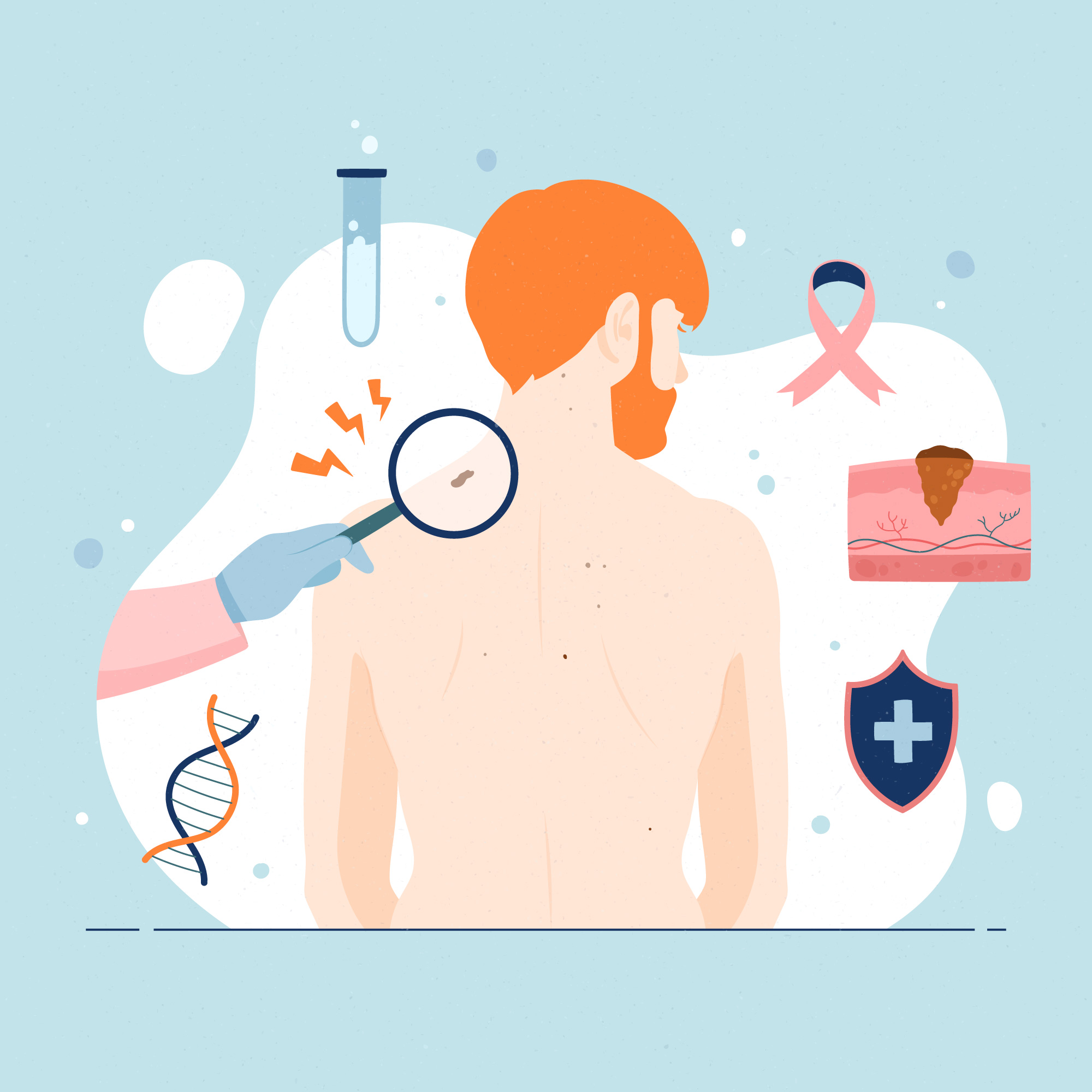
5. Skin Cancer (Basal Cell Carcinoma, Squamous Cell Carcinoma, Melanoma)
- Cause: Prolonged sun exposure, tanning beds, genetic predisposition.
- Symptoms: Changes in the size, shape, or color of moles or skin lesions, often asymmetrical with uneven borders.
- Management: Surgical removal, cryotherapy, radiation, and chemotherapy depending on the type and stage of cancer.
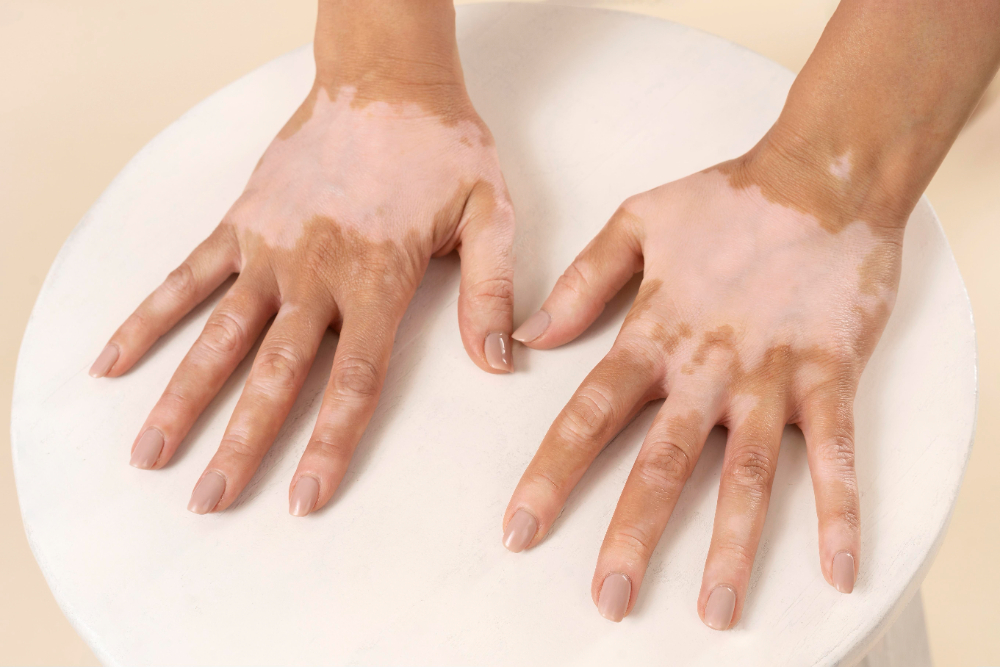
6. Vitiligo
- Cause: Autoimmune disorder, where the body's immune system attacks melanocytes, leading to loss of skin color.
- Symptoms: Patches of lighter skin, usually on the hands, face, and other parts exposed to the sun.
- Management: Topical corticosteroids, immunosuppressants, light therapy, and skin grafts. In some cases, repigmentation may occur naturally.
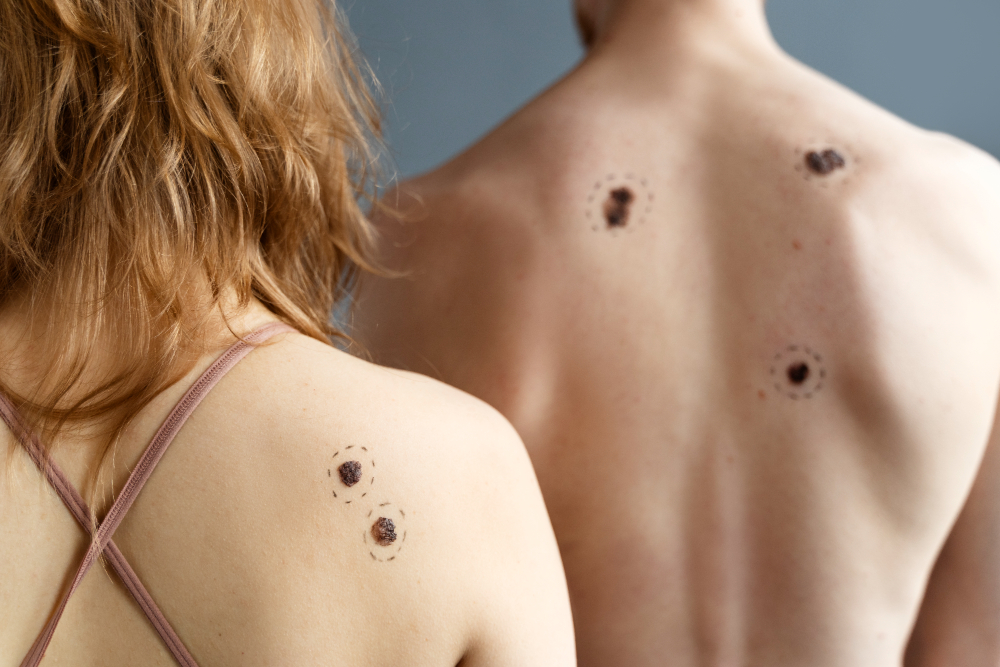
7. Warts (Viral Infection)
- Cause: Infection by human papillomavirus (HPV).
- Symptoms: Small, raised growths on the skin, often on hands, feet, or face.
- Management: Topical treatments like salicylic acid, cryotherapy (freezing), laser treatment, or surgical removal.

8. Fungal Infections
- Cause: Fungi like dermatophytes or yeasts such as Candida.
- Symptoms: Red, itchy, and flaky patches on the skin, including ringworm, athlete’s foot, or thrush.
- Management: Antifungal creams, oral antifungal medications, and proper hygiene.
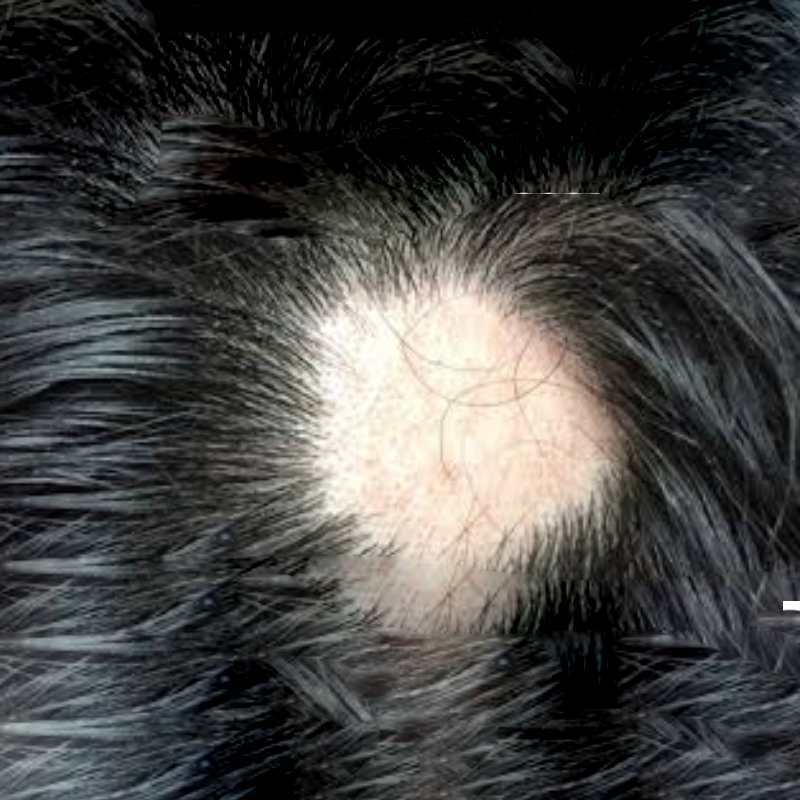
9. Alopecia Areata
- Cause: Autoimmune condition where the immune system attacks hair follicles, leading to hair loss.
- Symptoms: Small, round patches of hair loss on the scalp or other parts of the body.
- Management: Topical corticosteroids, immunotherapy, or oral medications like methotrexate or biologics.
Skin Health and Ayurveda
In Ayurveda, the skin is deeply connected to the internal balance of the body, particularly the three doshas (Vata, Pitta, and Kapha), the Agni (digestive fire), and the Rasa (plasma) and Rakta (blood) dhatus. The state of the skin reflects the health of the body’s internal systems. Ayurvedic treatments aim to restore balance to the doshas and promote the proper functioning of the digestive system, as this is crucial for healthy skin.
Ayurvedic Concepts for Skin Health
Vata Dosha
Vata governs dryness and movement. Imbalanced Vata leads to dry, flaky, and prematurely aging skin. Balance it with oils such as sesame oil.
Pitta Dosha
Pitta governs heat, metabolism, and transformation. Imbalance causes acne, rosacea, and psoriasis. Balance it with cooling herbs and oils like coconut oil.
Kapha Dosha
Kapha governs moisture and structure. Excess Kapha leads to oily skin and acne. Balance it with detoxifying treatments and cleansing oils.
Agni (Digestive Fire)
Imbalanced Agni leads to toxins (Ama) in the body, causing skin issues. Ayurvedic treatments focus on enhancing digestion to promote healthy skin.
Ayurvedic Treatments for Skin Diseases
1. Diet and Lifestyle
- Vata Imbalance: Warm, moist foods like soups, stews, and healthy fats (ghee, sesame oil). Avoid cold, dry foods.
- Pitta Imbalance: Cooling foods like cucumbers, dairy, and sweet fruits. Avoid spicy, acidic, and fried foods.
- Kapha Imbalance: Light, dry foods like vegetables, legumes, and whole grains. Avoid heavy, oily foods and dairy.
2. Herbal Remedies
- Neem: Anti-inflammatory, antibacterial, and antifungal. Used for acne, eczema, and fungal infections.
- Aloe Vera: Soothes and cools irritated skin. Treats burns, rashes, and acne.
- Turmeric: Anti-inflammatory and antioxidant. Treats acne, eczema, and psoriasis.
- Brahmi: Soothes skin conditions related to stress and nervous tension.
- Tulsi (Holy Basil): Purifying and antibacterial. Treats acne and other skin irritations.
3. External Treatments
- Oil Massages (Abhyanga): Promotes circulation, removes toxins, and enhances skin elasticity.
- Herbal Face Packs: A mixture of turmeric, sandalwood, and rose water cools and purifies the skin.
- Steaming: Herbal steam baths with eucalyptus and peppermint help clear pores and refresh the skin.
4. Detoxification (Panchakarma)
Panchakarma treatments like Virechana (purgation) and Swedana (sweating) cleanse the body to eliminate accumulated toxins, improving skin health.
5. Yoga and Meditation
Regular yoga practice and meditation reduce stress, balance the doshas, and enhance skin appearance.
Conclusion
Skin health is a reflection of internal balance, and Ayurvedic treatments aim to address the root causes of skin diseases by focusing on holistic lifestyle adjustments, diet, herbal remedies, and detoxification. By balancing the doshas, improving digestion, and reducing external and internal toxins, Ayurveda offers a comprehensive approach to managing skin conditions and achieving radiant, healthy skin. However, it’s important to consult a qualified Ayurvedic practitioner before starting any treatments to ensure they are suited to individual needs and constitution.
Contact Us for More Information

